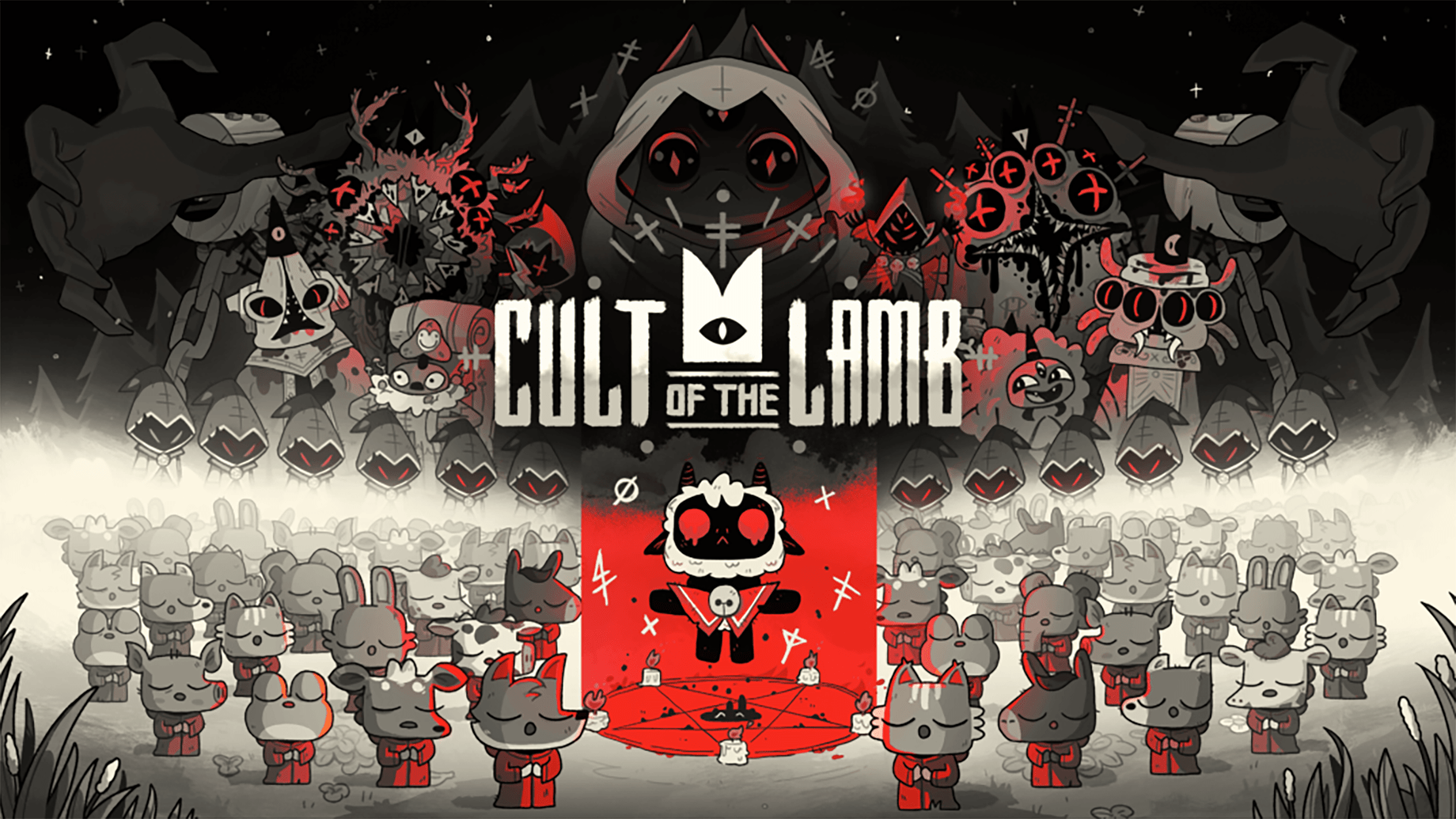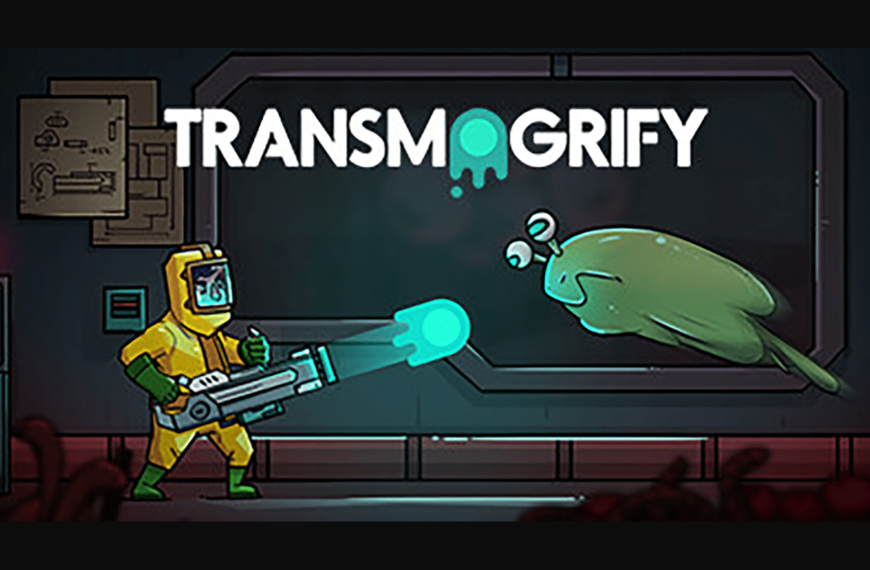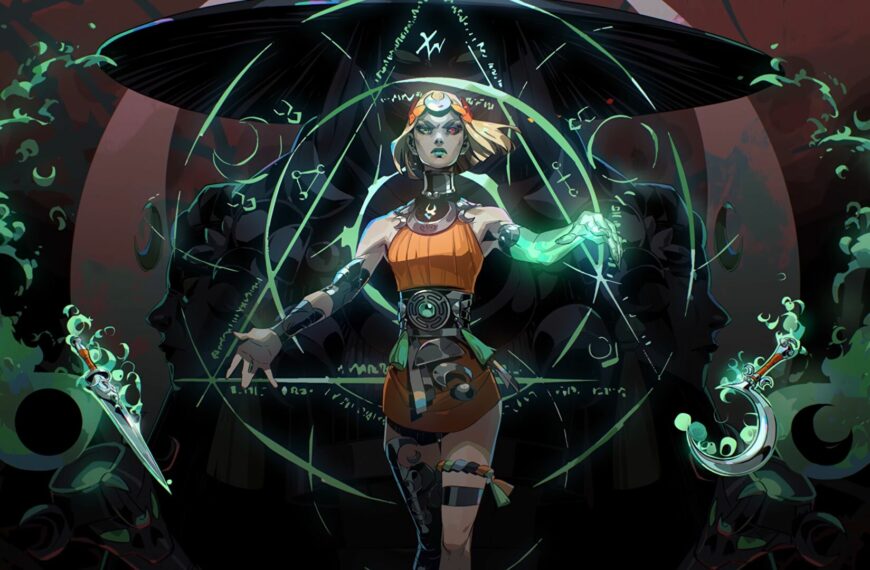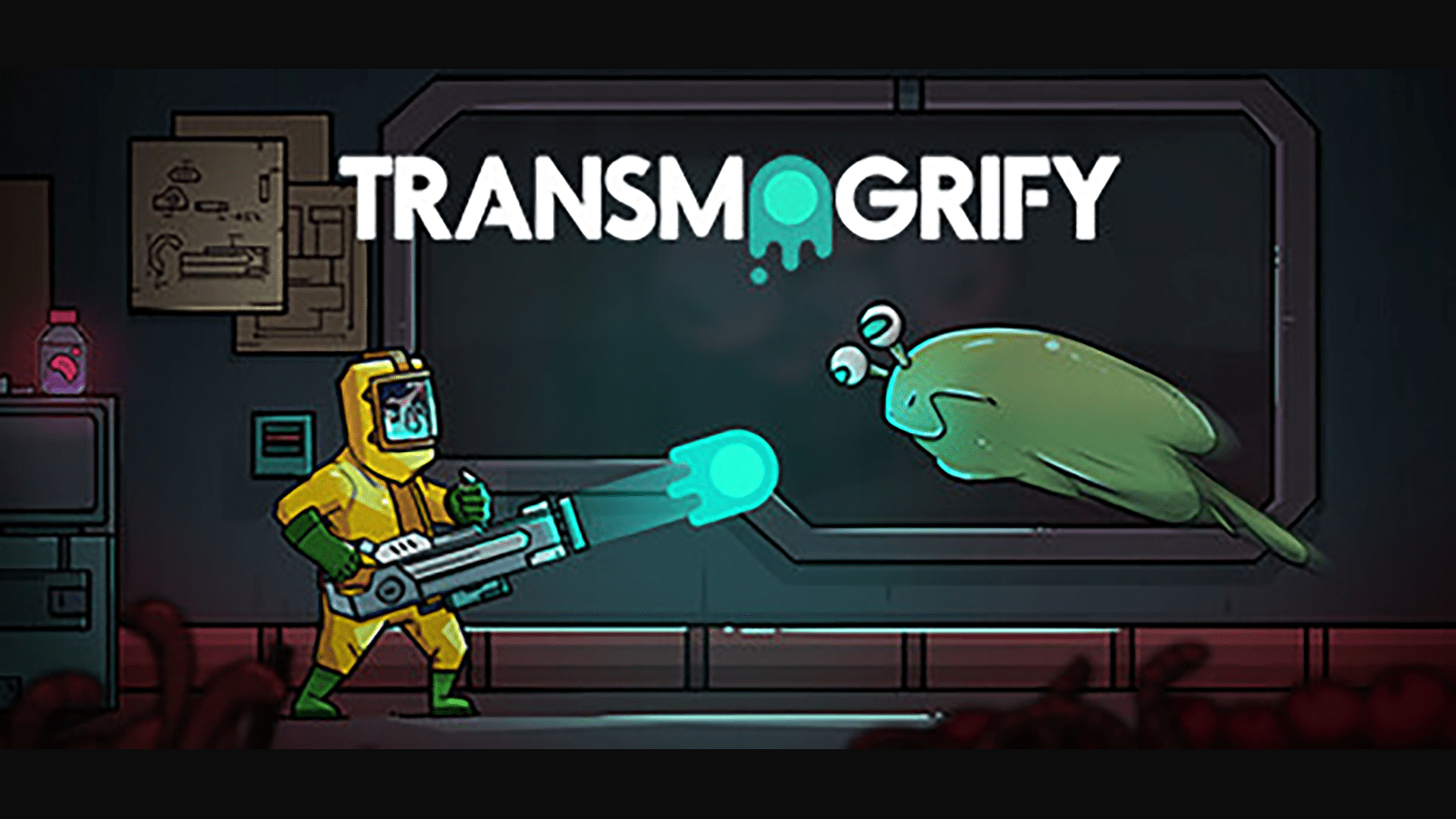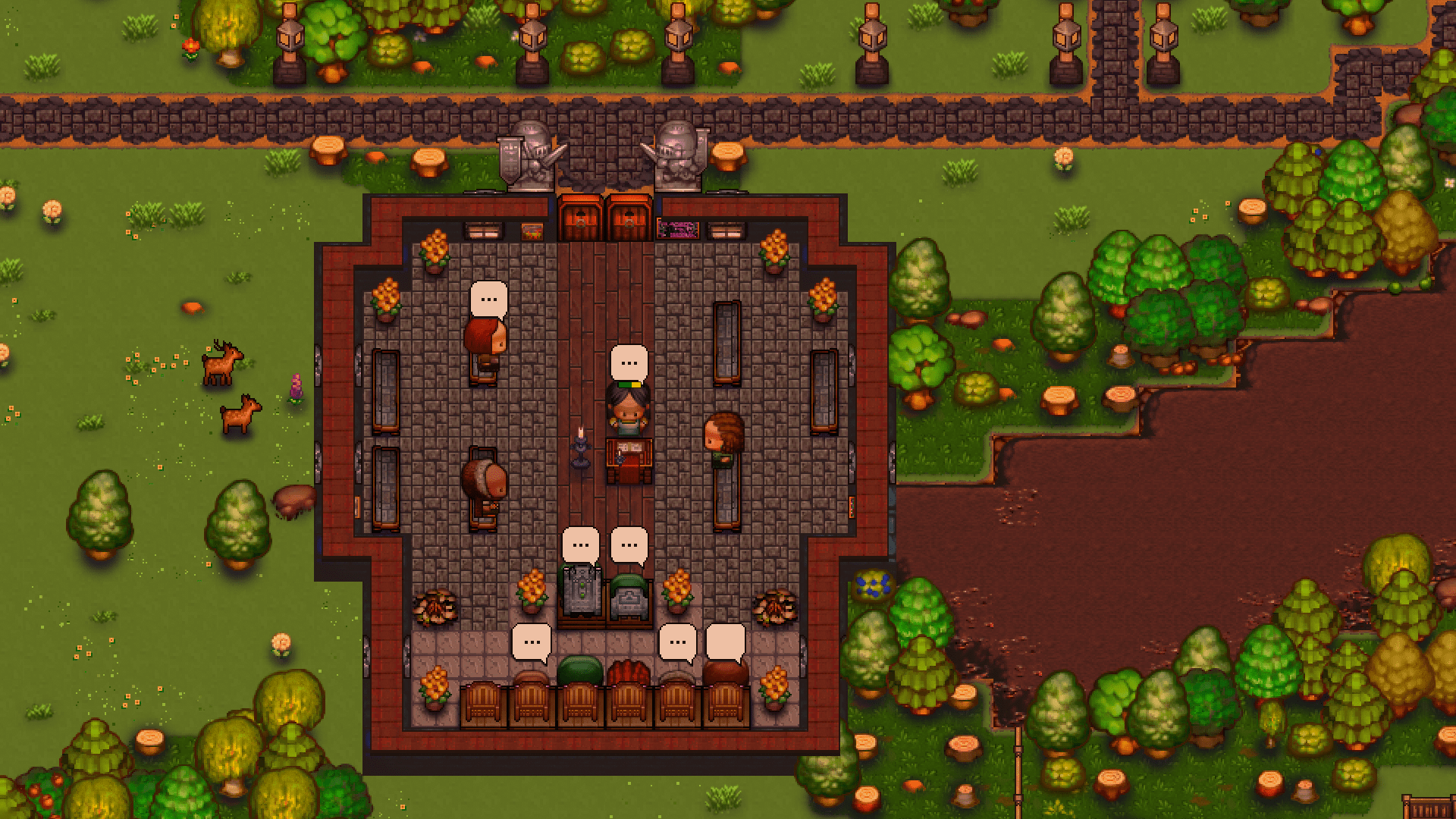Warning: Cult of the Lamb Contains content that may be distressing to certain audiences. Player discretion is advised.
Cult of the Lamb is a game that I’ve had my eye on for a little while now. The blend of dungeon crawling hack and slash with colony management aspects was more than a little reminiscent of Actraiser, and if you don’t know that I’m a massive Quintet fan by now then clearly I need to shill them harder. Ahem. Anyway.
Don’t let the artstyle fool you. This is a game about founding and managing a cult to an eldritch horror who at one point promised to remake the world in his image and again, he’s your boss so you have to do what he says. Just like a real corporate overlord.
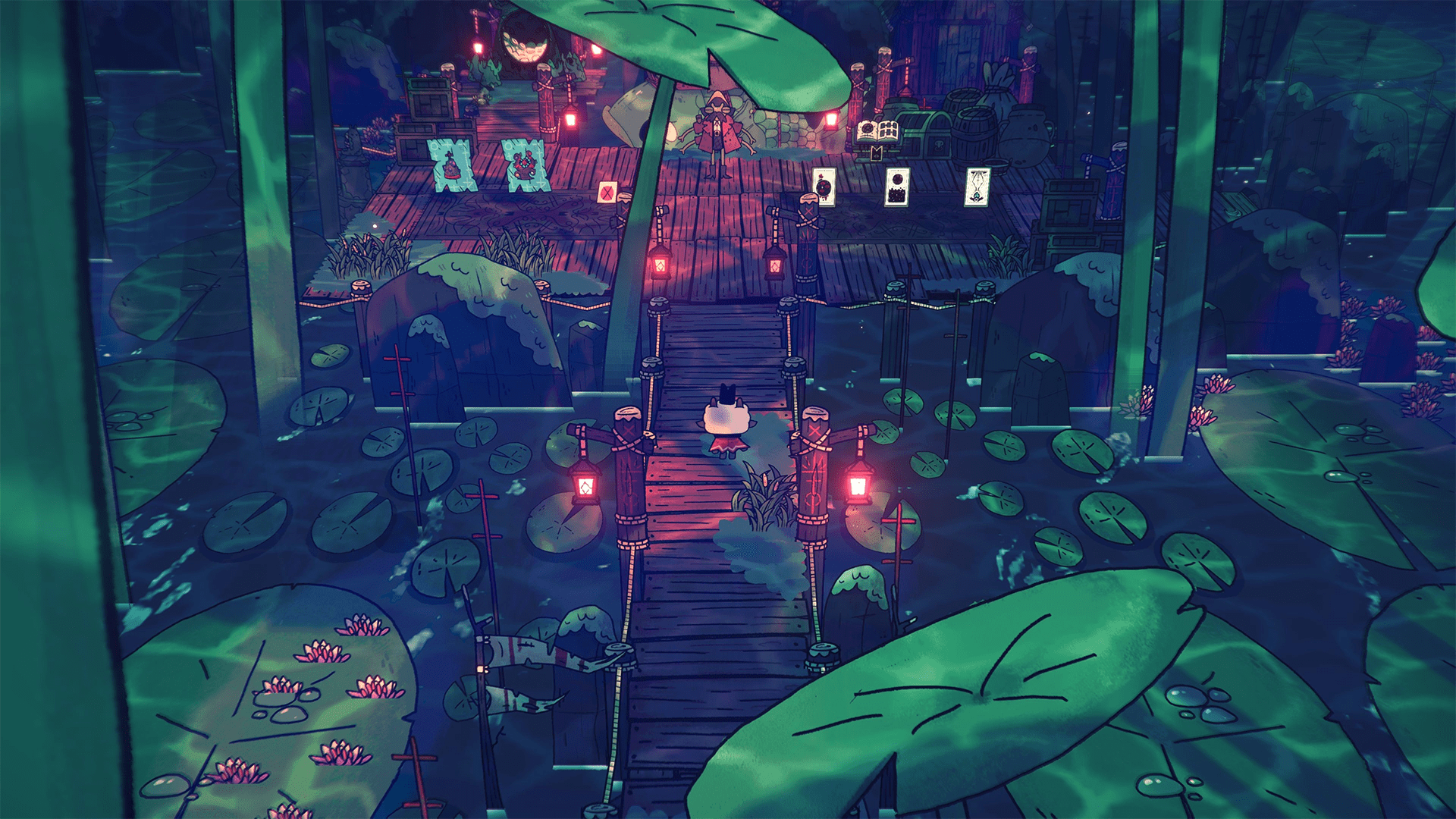
Spread the Word
If you’re going to combine genres like colony management with any kind of non-strategic gameplay, you have to handle it very carefully, as these gameplay styles are generally at odds. If you do it wrong, the people who enjoy the action segments will hate the management, and/or the people who enjoy the management will hate the combat sections. Or worse, people will hate both parts, finding they compete too much.
The easy solution is to tie them together somehow, like going exploring for resources for the base, and using the base to upgrade your gear for the exploration. Cult of the Lamb follows this general model to a T and does it well.
You are the leader of a cult that worships an eldritch god known as The One Who Waits. And to be a cult leader, you need, you know, actual cultists. This is where the management section comes in. It’s your job to get your followers food and shelter as well as setting up infrastructure so that your followers can automatically gather more resources or other useful items. Or actually grow and harvest their own food so they don’t starve to death.
But that sounds like a whole lot of work and as I’ll get around to describing later, these cultists have no real personality to encourage you to care about them, so why bother? Well, it’s because these gullible shmucks worship you, and their faith can be harnessed for upgrades. Some are upgrades for your compound, like getting new structures. Others are upgrades for your weapons and curses to make your dungeon crawling easier.
By getting your followers loyalty to you up, they’ll eventually gain levels producing more faith for you, so you get upgrades faster. This is your encouragement to have a cult compound that’s an actual usable living space for the people you kidnap and indoctrinate. Or purchase, you buy some of them.
Quick sidenote, one of the ways you up loyalty is by doing quests for your followers. These are not in any way story related and mostly serve to signpost mechanics you may not know about that you’ll need if you’re desperate. Even the ones that seem like they have a story really don’t, don’t be fooled. The reason I bring them up is that due to their random nature, you can get screwed. Refusing or failing a quest is a blow against your cult’s faith, but you can get quest to cook meals requiring ingredients three whole areas away from where you are now, or the resurrect a follower who is very much still alive.
This system works out well, requiring you to pay attention to your cult and plan your structures and resource refinement carefully, and balance various factors like hunger versus medicine. You never feel like you’re 100% confidant that you’re completely sustainable, which is exactly the feeling this should evoke. Especially since your followers age and die (or you can murder/sacrifice them, because, you know, cult) necessitating you to go out and get replacements.
The dungeon crawling section is a pretty standard roguelike hack and slash. It works on the room grid method, so each map is a bunch of rooms floating in a void connected by doors. These doors seal when you walk in until all the enemies are dead.
Also Read
Transmogrify PC Review: The Best Way To Defeat An Enemy
A video game protagonist wakes up in an on-fire science lab with nothing but an AI and a high-tech gun to…
Defy the Gods as a Witchy Moon Goddess in Hades 2
Greek-mythology-themed roguelike Hades is getting a sequel, but developer Supergiant has kept the details scant beyond a Hades 2 reveal trailer…
There’s a limited room variety, but the changed up enemy lineup and randomized weapons helps to make each run feel unique. Especially as there are also non-combat rooms that can give you items and perks that can drastically change how you go about fights. Additionally, each run is a series of these mini-dungeons as chosen by you in the flow-chart system popularized by Slay the Spire. Or there are other places you can go between mini-dungeons, like a healing station or a shop.
Combat in Cult of the Lamb has three elements. Melee attack, Curses, and Dodge. Trust me, that third one is the most important. At the start of a run, you’re given a random melee weapon and a curse and you’re stuck with them until you find something better. This has the upside of forcing you into combinations you would never consciously agree to, making sure that the game never feels too repetitive, but the downside is that the weapons vary slightly in fighting style, and you will spend a lot of time stuck with a weapon you hate.
The man differences between the weapons is their range, damage, and attack speed. Basic stuff really. The dagger swings fast but deals low damage and has short range. The hammer has huge range and obliterates enemy health like frozen glass, but is so slow that you’re stuck in a lengthy attack animation and can’t move until you’re done.
Curses are basically spells. Most of them are attacks but some are purely defensive. You cast curses using fervor, which is basically a mana system. But you get fervor by hitting enemies, and you only have a few uses of your curses, so you have to focus primarily on melee unless you’re lucky with your tarot readings.
Hm? Oh, the tarot readings? Yeah the perk system—temporary passive benefits that are staples in the roguelike genre—is handled by this soothsayer saying some sooths and giving you a tarot reading.
Combat is wonderfully responsive, though the fact that I can’t cancel a melee animation to go into a curse has cost me more than a few hits when I misjudged the end of said animation. Enemies telegraph their attacks perfectly so you know when to dodge so long as you aren’t being overwhelmed. The weapon passive effects can make two otherwise identical weapons feel very different. There’s nothing new here, but everything is done expertly.
My main complaint about the gameplay is that the game never explains anything to you. Most of it is intuitive enough, but not always. Like when a space on the dungeon crawling flowchart has the icon of a heart with arrows to an outlined heart. How am I supposed to know that replaces one of my normal hearts with a special heart without picking it? How am I supposed to know that the glowing orange arrows can be deflected but the orange glowing orbs cannot? Get used to trial and error to work out what does what and whether or not it’s a good idea.
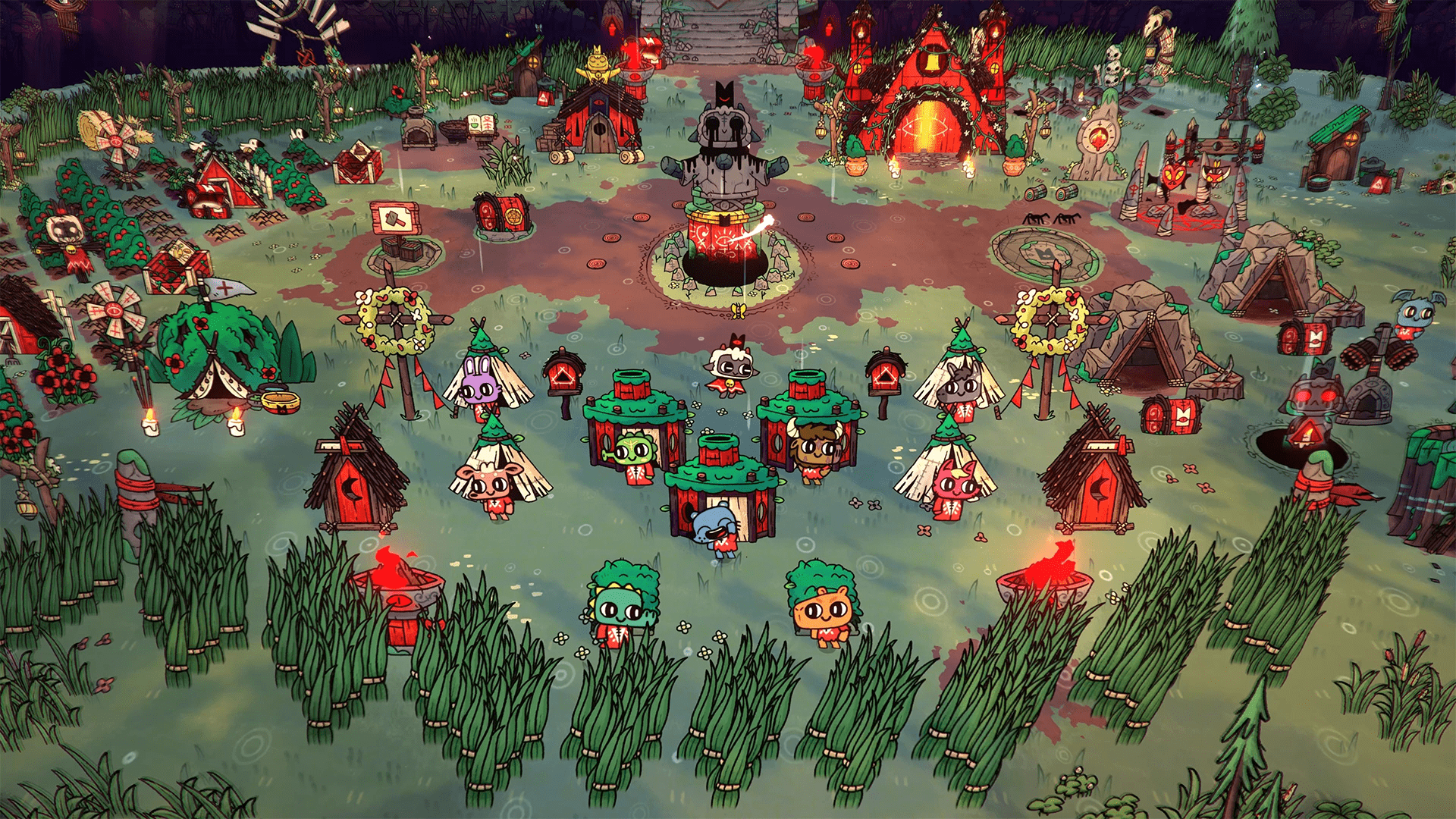
Three-Eyed Watcher
Cult of the Lamb has a really interesting aesthetic going for it. It has the simple thin lines of the CalArts style combined with 2D sprites on a 3D plane. They’ve combined the 2D and D so seamlessly that I didn’t notice that some of the buildings I built at the compound were 3D models for several hours and even now I’m not completely certain that they are models instead of sprites layered so that the camera makes it look like it’s 3D.
The art is fluid and beautifully animated, environments are distinct, and while the characters are simple, they’re also detailed and distinctive. Especially the ones who aren’t part of your cult. I didn’t mention them back in the gameplay section but there are quite a few different characters outside of your cult, and they’re all unique and stylish.
Speaking of really well-done art, the Bishops, the four main bosses that you need to kill, are all subtly themed in clever ways based around the ‘see no evil, speak no evil, etc.’ The game spells this out for you with the Steam achievements but it’s still an interesting way to theme the antagonists.
The music is hard to describe as I have little background in music and don’t recognize the instruments. The soundtrack makes heavy use of what I think might be a xylophone and does it well. The music in this game does a great job of setting the mood of wherever you happen to be, from the ominous power of the temple to the more upbeat and relaxing music that plays around your cult compound.
The sound effects have the impact I love to hear for that good sensory feedback on me and what I’m doing. I especially appreciate the noise that plays whenever you get hit for being clear and communicating what happened without being distracting.
The characters speak in either Simlish or the Animal Crossing language. If there’s any difference. This works better than you’d think as establishing what a character’s voice is can surprisingly stand on its own even without the fleshed-out voice acting. It might work better, actually, depending on how the delivery on some of the ominous lines would go. At least like this the delivery will never be cheesy or ruin the moment.
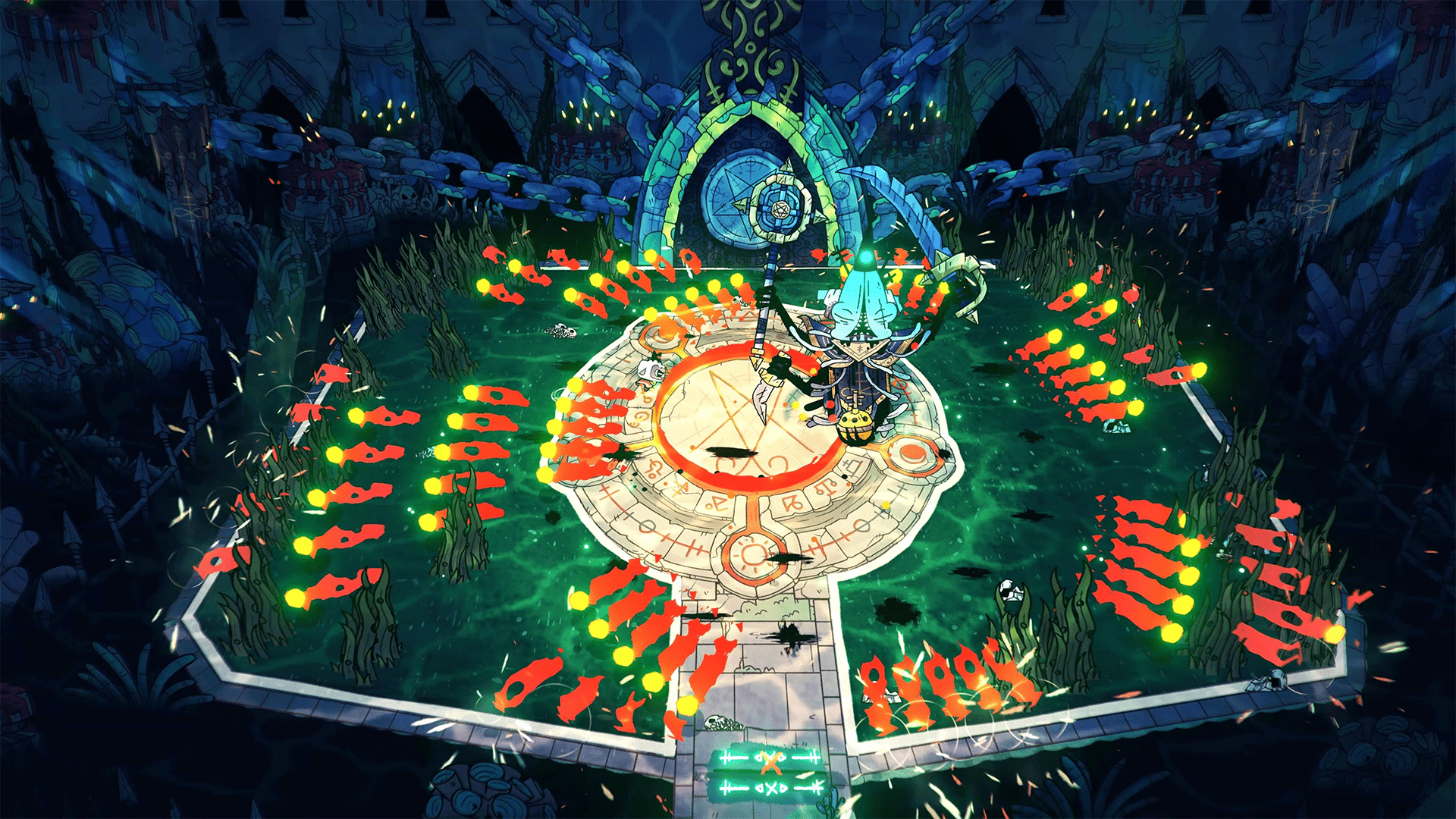
Preaching Gospel
I’ve already covered the basic plot of this game, but I left out quite a bit. To recap, you are the last lamb alive as the Bishops of the Old Faith have slain every single lamb in the land to avert a prophecy about the return of The One Who Waits, whom they sealed away long ago. However, each of the Bishops, including The One Who Waits, represents one of the Four Horseman. And The One Who Waits is Death, so killing you only makes it easier for him to contact you.
You may have noticed that counting The One Who Waits makes fie horseman, and the game answers this by making the first Bishop represent Chaos, and described as the youngest. The game does a good job of selling this with how the narrative ties into the gameplay. Each Bishop after the first will affect your followers in some way based on what they represent.
The non-follower characters have excellent personalities and quirks that makes them a delight to interact with.
This writing and design in this game seems somewhat at odds with the fantasy it is trying to sell. Like, this is a game about being the leader of a cult to a horrifying eldritch horror, and there are multiple bits of dialogue and gameplay mechanics encouraging you to consider your followers as expendable. This is further exemplified by how they have no discernable personalities and are all indistinguishable. You can even fully customize them upon indoctrinating them, from their name to their species and color.
But you can’t treat them as expendable cannon fodder.
Not only do you need them to give you devotion and faith and to work on facilities, but if you’re too cruel or apathetic to your followers, they’ll begin dissenting, potentially even leaving the cult and taking some of your resources with them.
So am I supposed to care about them? Am I supposed to view them all as literal human resources (err, animal resources)? Or it the idea that I’m only pretending to care so I further manipulate them? In that case why am I allowed to marry them?
And then there’s this game’s thing about poop.
Quick show of hands, who here actually thinks that poop jokes are funny or knows someone that thinks poop jokes are funny? Because I sure don’t and no one I know thinks so either. And yet people keep writing them so statistically someone out there has to or marketing would’ve shot it down a long time ago. (Then again, the Earthbound marketing failed, largely due to being entirely toilet humor, so…)
But I don’t find the poop jokes funny. I find them gross and uncomfortable, and this game’s obsession with reusing the same poop gags over and over has me asking some questions about the designers’ search history that I never, ever want answered.
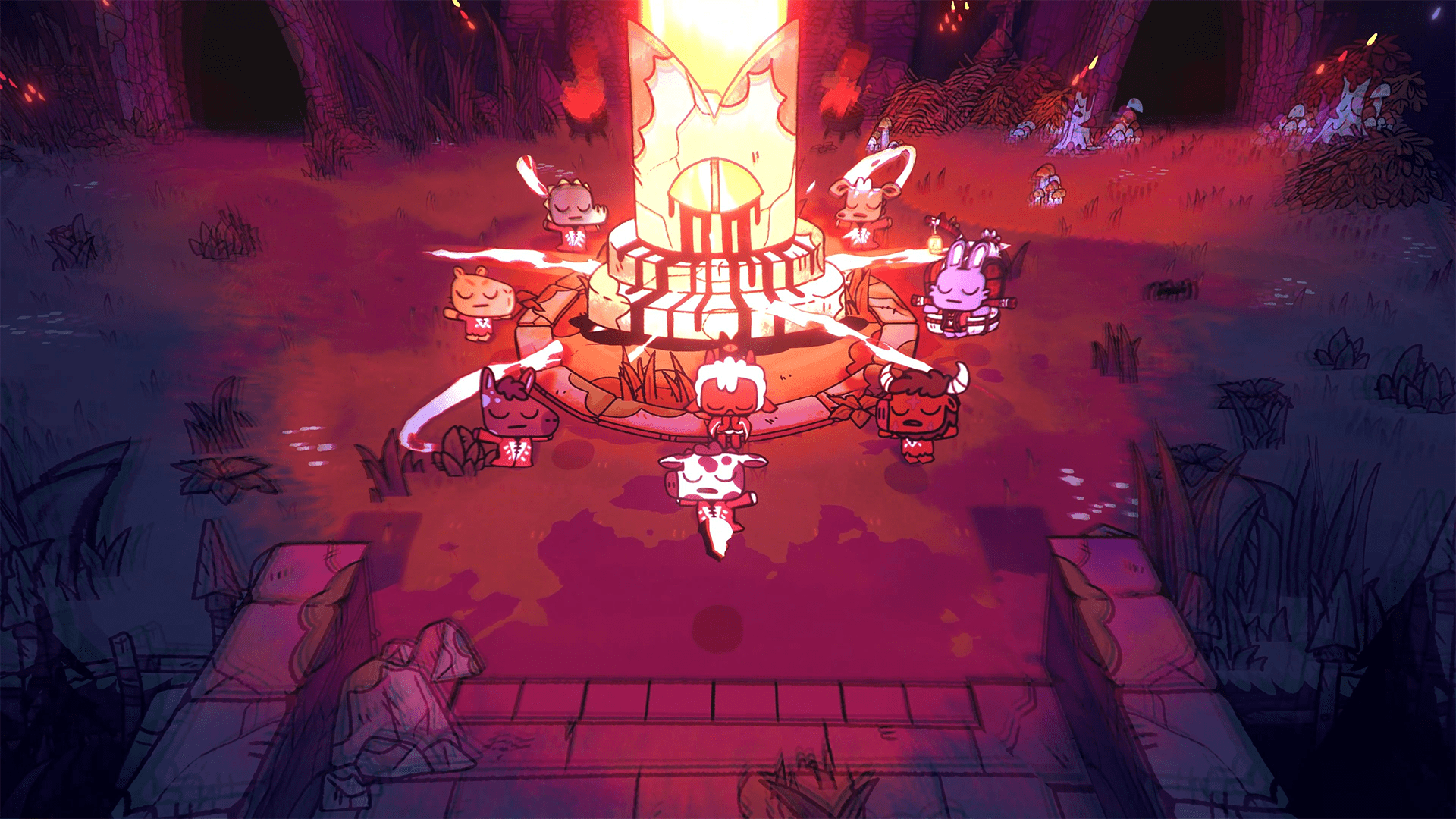
Conclusion
I’ve said before that 2022 is a year packed full of strong Indie titles and this is no exception.
Cult of the Lamb would stand strong on its own with nothing but the roguelike elements, but the masterful inclusion of the colony management makes for one of the most interesting gameplay loops I’ve seen in recent years.
Our Rating
Story
Gameplay
Visuals

